
How to Use Seeed Studio XIAO nRF52840 Plus: Examples, Pinouts, and Specs
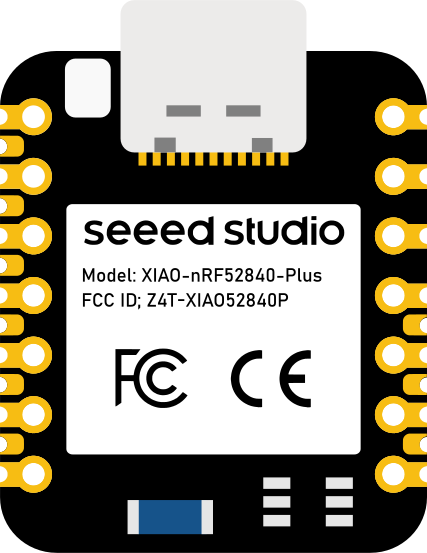
 Design with Seeed Studio XIAO nRF52840 Plus in Cirkit Designer
Design with Seeed Studio XIAO nRF52840 Plus in Cirkit DesignerIntroduction
The Seeed Studio XIAO nRF52840 Plus is a compact and powerful microcontroller board built around the Nordic nRF52840 chip. It is designed for low-power wireless applications and features Bluetooth 5.0 support, USB-C connectivity, and a variety of GPIO pins. Its small form factor and robust capabilities make it ideal for IoT, wearable devices, and other wireless communication projects.
Explore Projects Built with Seeed Studio XIAO nRF52840 Plus
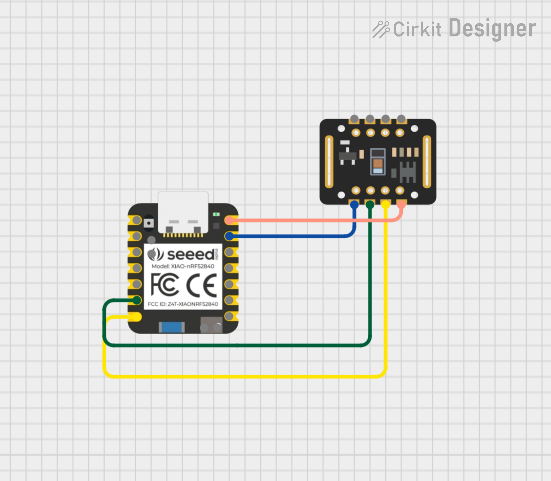
 Open Project in Cirkit Designer
Open Project in Cirkit Designer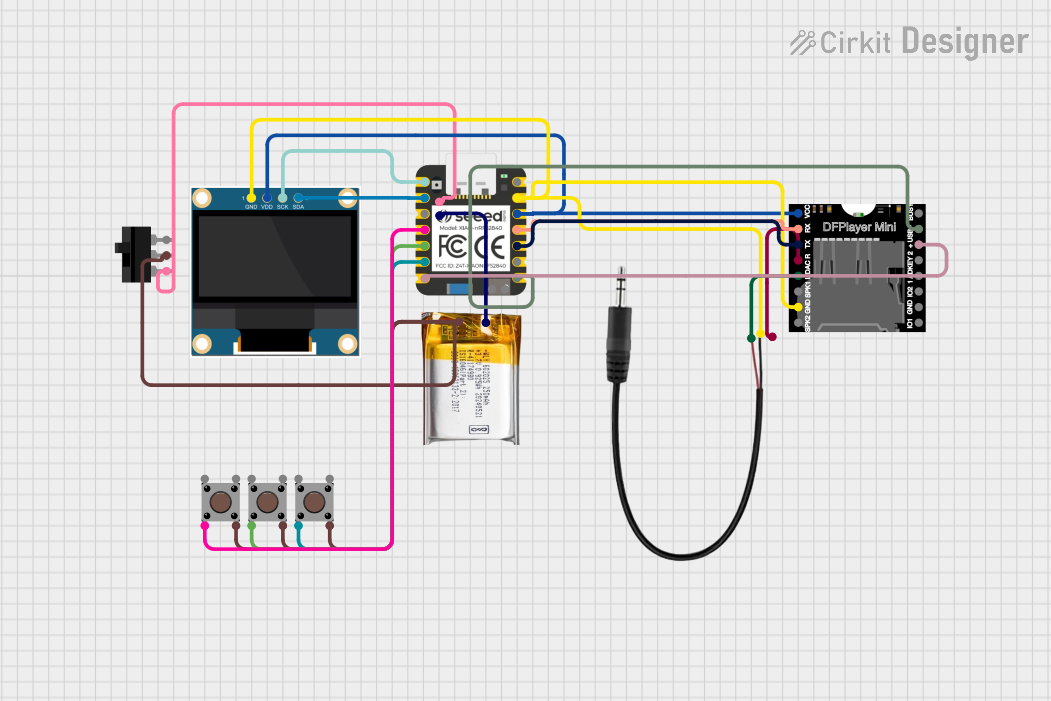
 Open Project in Cirkit Designer
Open Project in Cirkit Designer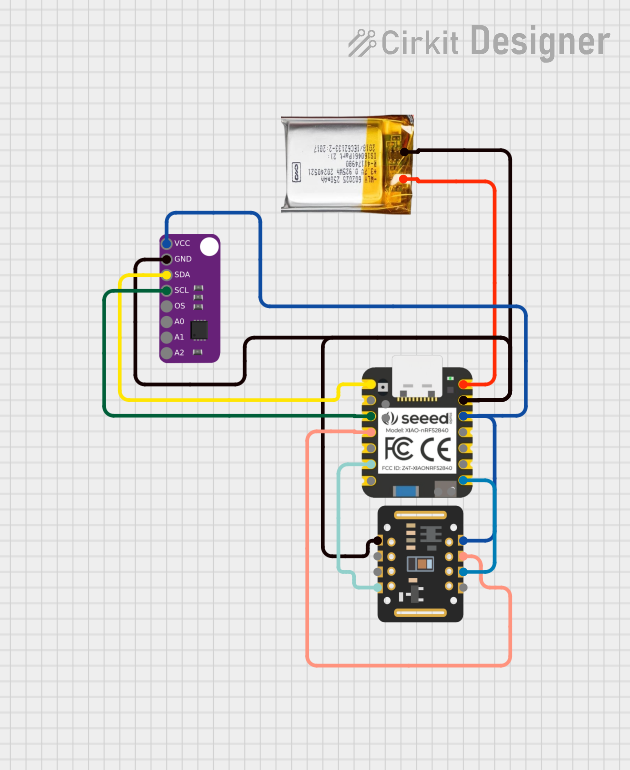
 Open Project in Cirkit Designer
Open Project in Cirkit Designer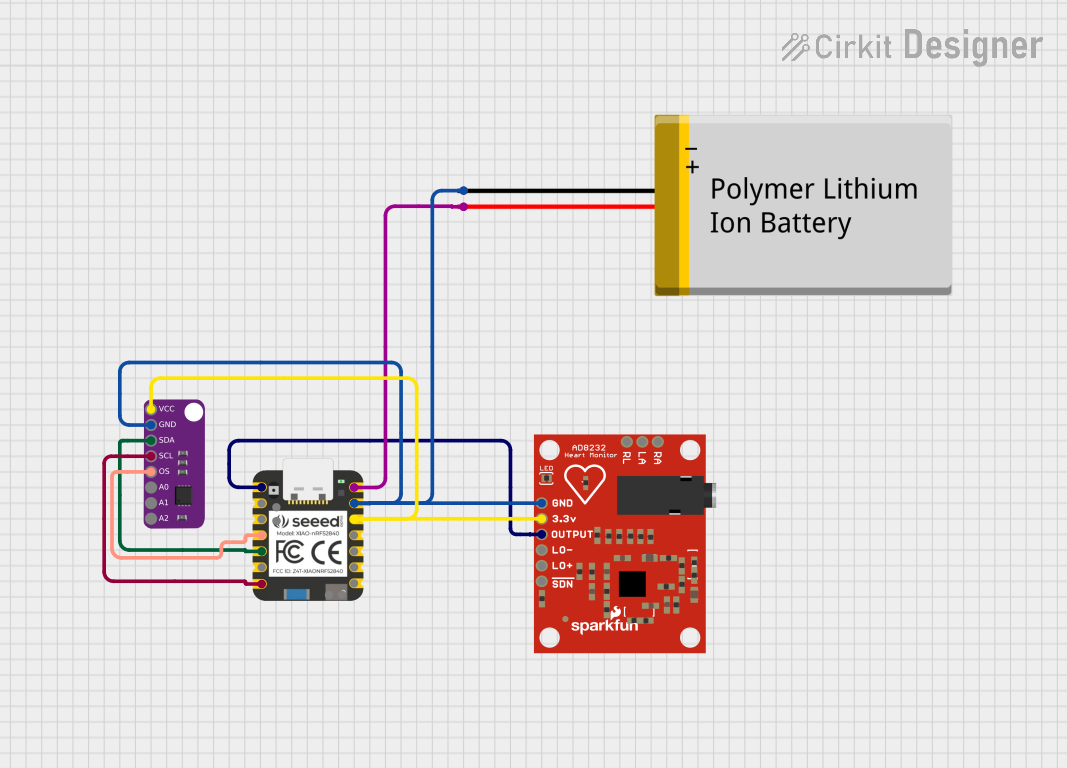
 Open Project in Cirkit Designer
Open Project in Cirkit DesignerExplore Projects Built with Seeed Studio XIAO nRF52840 Plus

 Open Project in Cirkit Designer
Open Project in Cirkit Designer
 Open Project in Cirkit Designer
Open Project in Cirkit Designer
 Open Project in Cirkit Designer
Open Project in Cirkit Designer
 Open Project in Cirkit Designer
Open Project in Cirkit DesignerCommon Applications and Use Cases
- Bluetooth Low Energy (BLE) applications
- IoT devices and smart home systems
- Wearable technology
- Wireless sensors and data loggers
- Prototyping for low-power wireless communication
Technical Specifications
Key Technical Details
| Specification | Value |
|---|---|
| Microcontroller | Nordic nRF52840 (ARM Cortex-M4F @ 64 MHz) |
| Wireless Connectivity | Bluetooth 5.0, BLE, Thread, Zigbee |
| Flash Memory | 1 MB |
| RAM | 256 KB |
| Operating Voltage | 3.3V |
| Input Voltage Range | 3.3V - 5V (via USB-C) |
| GPIO Pins | 11 (including analog and digital) |
| Communication Interfaces | I2C, SPI, UART, PWM |
| USB Interface | USB-C (supports programming and power) |
| Dimensions | 21 x 17.5 mm |
Pin Configuration and Descriptions
| Pin Name | Pin Type | Description |
|---|---|---|
| 3V3 | Power Output | 3.3V power output for external components |
| GND | Ground | Ground connection |
| D0 | Digital I/O | General-purpose digital I/O pin |
| D1 | Digital I/O | General-purpose digital I/O pin |
| A0 | Analog Input | Analog input pin (ADC) |
| A1 | Analog Input | Analog input pin (ADC) |
| SDA | I2C Data | I2C data line |
| SCL | I2C Clock | I2C clock line |
| RX | UART RX | UART receive pin |
| TX | UART TX | UART transmit pin |
| RST | Reset | Reset pin for the microcontroller |
Usage Instructions
How to Use the Component in a Circuit
- Powering the Board: Connect the board to a USB-C cable for power and programming. Alternatively, you can supply 3.3V to the 3V3 pin.
- Programming: Use the Arduino IDE or other compatible development environments to program the board. Select "Seeed XIAO nRF52840" as the board in the IDE.
- Connecting Peripherals: Use the GPIO pins to connect sensors, actuators, or other peripherals. Ensure that the voltage levels of connected devices are compatible with the 3.3V logic of the board.
- Wireless Communication: Utilize the built-in Bluetooth 5.0 capabilities for wireless communication. Libraries such as
Adafruit Bluefruitcan simplify BLE development.
Important Considerations and Best Practices
- Voltage Levels: Ensure all connected peripherals operate at 3.3V logic levels to avoid damaging the board.
- Heat Management: While the board is efficient, avoid prolonged high-current operations to prevent overheating.
- Firmware Updates: Regularly check for firmware updates to ensure compatibility and access to the latest features.
- Pin Usage: Avoid using the same pin for multiple functions simultaneously to prevent conflicts.
Example Code for Arduino UNO
Below is an example of using the Seeed Studio XIAO nRF52840 Plus to blink an LED connected to pin D0.
// Define the pin for the LED
const int ledPin = D0;
void setup() {
// Set the LED pin as an output
pinMode(ledPin, OUTPUT);
}
void loop() {
// Turn the LED on
digitalWrite(ledPin, HIGH);
delay(1000); // Wait for 1 second
// Turn the LED off
digitalWrite(ledPin, LOW);
delay(1000); // Wait for 1 second
}
Troubleshooting and FAQs
Common Issues and Solutions
Board Not Recognized by Computer:
- Ensure the USB-C cable is a data cable, not just a charging cable.
- Check that the correct board and port are selected in the Arduino IDE.
Program Upload Fails:
- Double-check the board selection in the IDE.
- Press the reset button twice to enter bootloader mode and try uploading again.
Bluetooth Not Working:
- Verify that the BLE library is correctly installed and initialized in your code.
- Ensure the device is within range and not obstructed by physical barriers.
Overheating:
- Reduce the current draw of connected peripherals.
- Ensure proper ventilation around the board.
FAQs
Q: Can I power the board with a battery?
A: Yes, you can power the board using a 3.7V LiPo battery connected to the 3V3 and GND pins.
Q: Does the board support USB OTG?
A: No, the USB-C port is primarily for programming and power.
Q: Can I use this board for Zigbee applications?
A: Yes, the nRF52840 chip supports Zigbee, but you will need to use appropriate libraries and configurations.
Q: Is the board compatible with CircuitPython?
A: Yes, the Seeed Studio XIAO nRF52840 Plus supports CircuitPython, making it versatile for Python-based development.